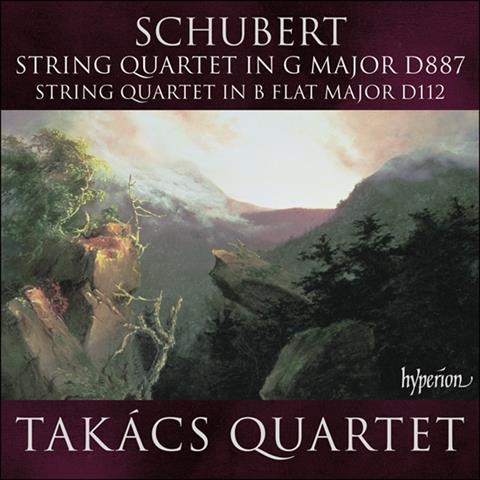A distinguished quartet brings commitment to works early and late

The Strad Issue: September 2024
Description: A distinguished quartet brings commitment to works early and late
Musicians: Takács Quartet
Works: Schubert: String Quartets: no.8 in B flat major D112; no.15 in G major D887
Catalogue number: HYPERION CDA68426
Consummate musicianship is a given in any new recording by the Takács Quartet, and it approaches Schubert’s final string quartet of 1826 – one of the peaks of the early Romantic repertoire – with its customary seriousness of intent. It responds as if instinctively to the myriad colours of this large-scale, endlessly challenging work, which lurches from near-violence to sweet consolation as abruptly as it does from major to minor and back.
In the Andante the players pay heed to Schubert’s un poco moto instruction, and its discontinuities and non sequiturs needle as they should. The Scherzo has an uncommon Mendelssohnian lightness, contrasting vividly with the Trio’s lilting Ländler. Only in the finale’s dance of death does the forward thrust feel a little unvarying, certainly when compared to the more nuanced Brandis Quartet (Nimbus).
Watch: The Takács Quartet performs Schubert’s Death and the Maiden
Read: Sentimental Work: Edward Dusinberre on Beethoven’s String Quartet no.8
Read: Session Report: the Takács Quartet on re-recording Schubert
Of course, it’s all too easy to read biography into a composer’s music. A decade or so earlier, the teenage Schubert was clearly in a happier place, composing prolifically and turning out a procession of more or less experimental quartets for performance by his schoolfriends or his family quartet. His Eighth Quartet (of 1814) boasts Mozartian melodiousness and Haydnesque rusticity, although Schubert’s mature voice is already evident. Top marks to the Takács for offering this comparative rarity, and – especially – for playing the long exposition repeat in D887’s opening movement. The recording was made, like the Brandis’s, with stunning clarity at the Nimbus Concert Hall in Monmouth.
DAVID THREASHER











































No comments yet